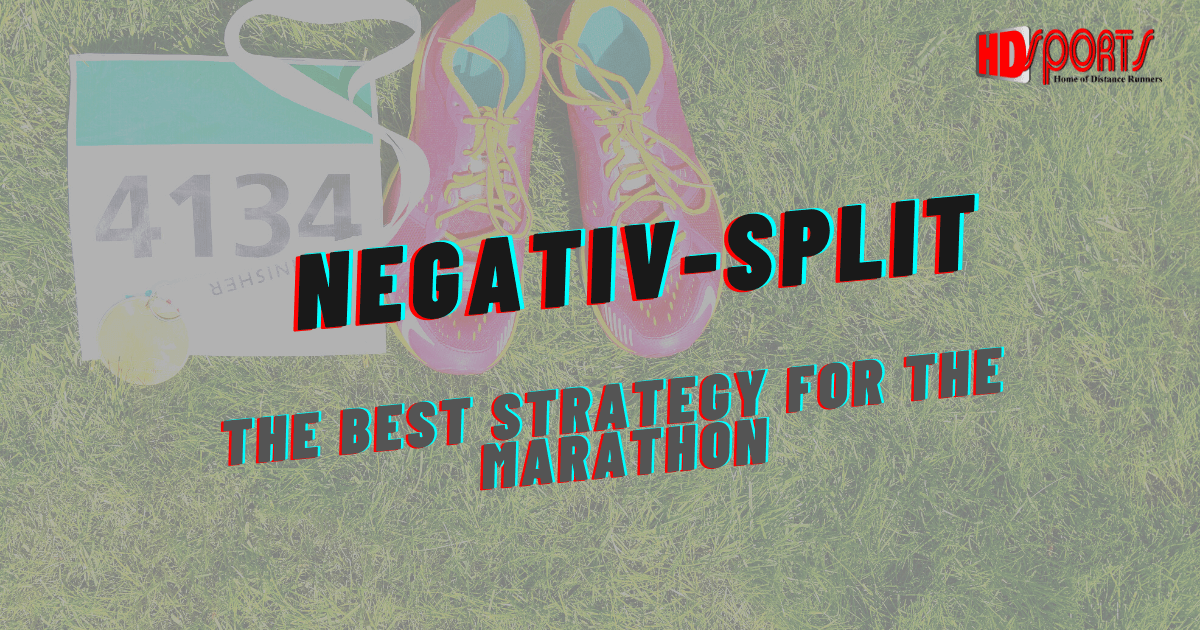When a marathon runner runs a negative split, he or she has covered the second half of the marathon faster than the first half.
The marathon consists of a total of 42.195 kilometers. Half of the distance (21.097 kilometers) is the half marathon. If you now run the first half marathon slower than the following half marathon, you have reached a negative split.
Negative split: The best tactic for the marathon
A "negative split" is rarely run in a marathon. However, it is the "magic formula" for a successful marathon. Simple example: among men, marathon world records were run a total of 7 times between 2003 and 2018. Five of these seven world records were achieved with a negative split. In 2003, for example, Paul Tergat needed 1:03:01 hours for the first 21.097 kilometers before following it up with 1:01:54 hours for the second race distance, which was 67 seconds faster. In 2018, Eliud Kipchoge was also 33 seconds faster on the second half marathon distance than on the first half of the race when he set his historic marathon world record (2:01:39 hours).
Basically, of course, the goal is to be able to run a marathon as consistently as possible until the end. That alone is an ambitious goal, which unfortunately is very often not achieved. But especially among amateur runners, there is a great danger of starting the race too quickly. The result is almost always a drop in performance. A "conservative" race strategy, on the other hand, has much higher chances of achieving a satisfactory result.
Strategy: Negative split in marathon running
So how do you achieve a negative split? We explain this with a simple example: target time 3 hours for the marathon. This corresponds to a kilometer average of 4:16 minutes. On the first 21.1 kilometers you should run this pace as exactly as possible or even minimally slower (one to max. 2 seconds per kilometer). The goal should be to pass the half marathon distance after 1:30:00 to 1:30:15 hours. After reaching the half marathon mark, of course, the pace should not be increased abruptly, but the pace of 4:16 should continue to be run patiently.
Through this conservative race strategy, the chance is very high that the infamous "man with a hammer" will be avoided and thus the running pace can continue to be maintained without complete exhaustion. Approximately 10 kilometers before the finish, the pace can now be increased minimally (pace 4:10 minutes per kilometer), and those who continue to feel good in the final kilometers can then continue to gradually increase the pace. The result will be a time under three hours and a really nice feeling to boot. After all, it's much nicer to be able to pick up speed in the marathon towards the end of the race (and overtake many runners who didn't follow this tactic) than to struggle, totally exhausted, meter by meter towards the finish line.
More running: What does "aerobic" and "anaerobic threshold" mean?


![Running events in January 2026 [Running Calendar] Running calendar: Running competitions in January](/images/thumbnails/raxo/tb-w364-h121-cut-int-2900c917ef7e6c1f41648a9d77e0fff1.webp)
![Running in Florida - All Races 2026 [Running Calendar] Florida Running Race Calendar](/images/thumbnails/raxo/tb-w364-h121-cut-int-096354f441ef0bd465f96ab1982ddb50.webp)
Kommentar schreiben